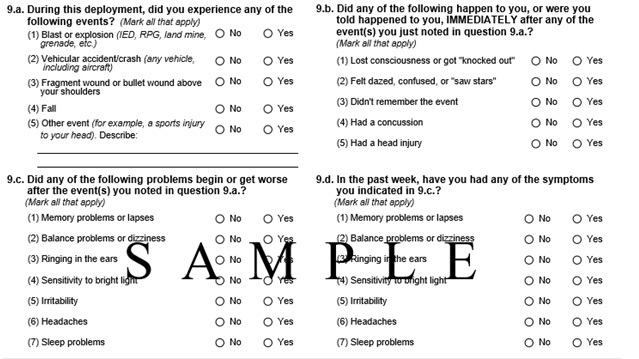Traumatic brain injury (TBI) is a common negative health consequence of blast exposure and can be debilitating both to individual Service members and to operational units. However, not all Service members develop a TBI after exposure to a blast. Consequently, it is crucial to understand what factors might predispose an individual to blast-induced TBI.
Recently, Belding and colleagues from Naval Health Research Center (San Diego, CA)1 investigated whether exposure to repetitive occupational overpressure was a risk factor for blast-induced mild TBI (mTBI) during deployment. Many Service members work with heavy caliber weaponry or explosive munitions that impart blast overpressure waves on the user, with unknown long-term effects. Belding et al. hypothesized that Service members who experience repeated low-level overpressure due to their military occupation may have a higher likelihood of developing future deployment-related mTBI.
The authors based their analyses on a large sample (N=181,423 active duty Marines) of Post-Deployment Health Assessments (PDHAs), a form required to be completed within 30 days after deployment. As in the image below, the PHDA includes items that assess acute blast exposure during the most recent deployment as well as symptoms of blast-related mTBI. Each Marine's repetitive occupational overpressure exposure risk was estimated based on their military occupational specialty.
Regression analyses indicated that Marines with a high repetitive occupational overpressure exposure risk (e.g., Infantrymen, Artillerymen) were also at an increased risk for mTBI during deployment. In fact, individuals at the highest risk for mTBI were those who both experienced a blast during deployment and were employed in a high-risk occupation; Marines in this category were 45 percent more likely to report a probable mTBI. Among Marines who did not have blast exposure, this differential risk was still present, but less marked; Marines in high risk occupations were five percent more likely to have a probable mTBI than those in low risk occupations. The authors also found that Marines in high risk occupations were 23 percent more likely to have a probable mTBI whether they experienced a blast or not, and that Marines who experienced a blast during deployment were seven percent more likely to report mTBI symptoms regardless of their occupational category.
Future avenues for research include identifying whether Marines in high risk occupations sustain more severe forms of TBI and whether the persistence of mTBI symptoms differs as a function of occupational risk for repetitive overpressure exposure.
The data used for this analysis was part of a larger data set from the
Blast Exposure, Traumatic
Brain Injury, and Self-Reported Symptomology Among Active Duty Enlisted Marines: An Examination of Post-Deployment Health Assessment Records,
2005-2012 (![]() 7 MB) technical report.
7 MB) technical report.

1 Belding, Jennifer N., et al. "Blast exposure and risk of recurrent occupational overpressure exposure predict deployment TBIs." Military medicine (2019).
Your 15 minute session will timeout in approximately 10 minutes.
If you're in the middle of entering information, please close this warning and save your progress (if possible) or finish up your task.
If your session fully times out, you will lose any un-saved work.
Your current Blast Injury Research Program session has expired.
Your next click will take you away from the private area, and you will lose any work you have in-progress.
Please enter your email address, and try again.